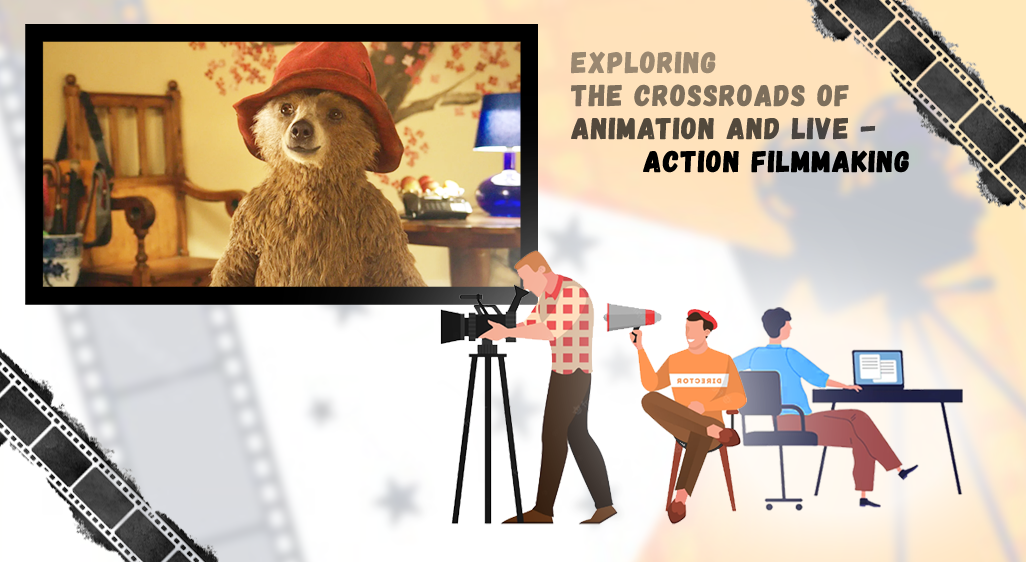In the field of visual narrative, animation and live-action filmmaking have long been regarded as distinct genres. However, there has been an intriguing crossover between these two media in recent years. Animation and live-action components are being combined more frequently in films to provide fresh and visually appealing stories. This fork in the road offers intriguing opportunities, stretching the limits of imagination and creating fresh storytelling opportunities. We will delve into the worlds of live-action and animated filmmaking in this blog, examining how these two genres interact, the methods employed, and the effects they have on the entire cinematic experience.
The rise of animated live-action movies, the ways that animation improves live-action visuals, the capacity to give inanimate objects life, and the difficulties associated with this particular style of filmmaking have all been covered in this blog post. With filmmakers constantly pushing the envelope and developing fresh narrative possibilities, the future of animation and live-action blending is promising. So grab your seatbelts and prepare to be enthralled by the fascinating and creative world of animation and live-action cinema!
The Rise of Animated Live-Action Films
The concept of blending animation and live-action is not entirely new. However, in recent years, we have witnessed a surge in animated live-action films that push the boundaries of what is possible. Films like “Who Framed Roger Rabbit” and “Mary Poppins” were early pioneers in seamlessly integrating animated characters into live-action settings. These films paved the way for a new wave of creativity, with movies like “The Jungle Book,” “Paddington,” and “Detective Pikachu” taking it to new heights. The use of advanced technologies and techniques has made it possible to bring animated characters to life alongside real actors, creating a sense of believability and immersion.
This rise in animated live-action films can be attributed to several factors. Firstly, advancements in visual effects and computer-generated imagery (CGI) have made it easier to create a realistic and seamless integration between animation and live-action footage. Additionally, audience tastes have evolved, and there is a growing appetite for imaginative and visually stunning stories that combine the best of both worlds.
Animation Enhancing Live-Action Visuals
One of the most significant contributions of animation in live-action filmmaking is its ability to enhance and augment visual elements. Animation allows filmmakers to create breathtaking visual effects, impossible stunts, and fantastical worlds that would be challenging or cost-prohibitive to achieve with practical effects alone. Films such as “Avatar” and “Guardians of the Galaxy” demonstrate the seamless merging of animation and live-action, bringing spectators to awe-inspiring and immersive cinematic universes. The power of animation brings to life exotic alien landscapes, larger-than-life creatures, and mesmerizing space conflicts.
Animation also allows for the manipulation of time and space, allowing for strange and mind-bending sequences that attract spectators. Animation is used in films like “Inception” and “Doctor Strange” to bend reality, creating visually dazzling sequences that defy physics. Furthermore, animation can enhance the emotional impact of live-action scenes. By combining animation with live-action footage, filmmakers can add an extra layer of depth and symbolism to key moments. For instance, in the film “Life of Pi,” the integration of animation heightened the mystical and metaphorical aspects of the story, resulting in a more profound and visually engaging experience for the audience.
Bringing Inanimate Objects to Life
Animation has the power to bring inanimate objects to life, adding depth and personality to the story. In live-action filmmaking, animating objects has been utilized in various ways, from creating anthropomorphic characters like “Toy Story” to giving life to non-human entities like the brooms in “Fantasia.” This convergence of animation and live-action allows filmmakers to imbue ordinary objects with emotions and characteristics, creating a unique and engaging narrative. It opens up new storytelling possibilities, blurring the line between the real and the animated world.
By animating inanimate objects, filmmakers can evoke emotions, create comedic moments, or highlight the significance of certain objects within the story. The result is a rich and immersive cinematic experience that captivates and entertains audiences.
Animated Live-Action Filmmaking Challenges
While the combination of animation and live-action creates intriguing possibilities, it also comes with a unique set of difficulties. To retain a consistent visual aesthetic, filmmakers must carefully balance the incorporation of animated elements with live-action material. Precision synchronization and close attention to detail are necessary for seamless interaction between live actors and animated characters.
The dynamic crossroads where animation and live-action filmmaking intersect unleashes a torrent of creative possibilities that transcend traditional storytelling. This fusion not only elevates visual narratives to new heights but also challenges the very foundations of filmmaking norms. As technological advancements surge forward, we stand on the precipice of witnessing even more groundbreaking and innovative uses of animation within the realm of live-action films. The convergence of these two mediums presents filmmakers with an expansive and limitless canvas upon which they can weave mesmerizing and imaginative tales, merging the best aspects of both worlds. As enthusiastic audiences, we eagerly anticipate being whisked away to awe-inspiring and captivating realms, where reality seamlessly entwines with the animated domain, leaving an indelible mark on our cinematic experiences. Get ready to embark on an extraordinary journey where the boundaries of imagination are shattered, and the impossible becomes possible.












